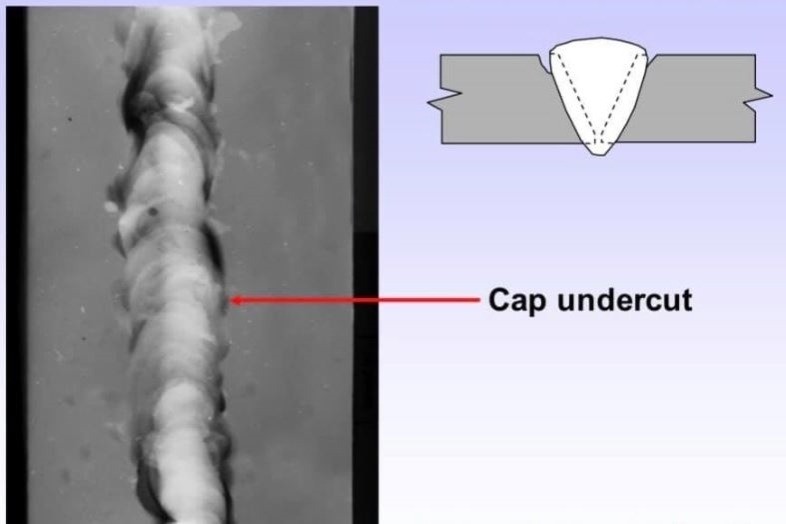Preventing Weld Undercut: Proven Techniques Every Welder Ought To Know
Preventing Weld Undercut: Proven Techniques Every Welder Ought To Know
Blog Article
Understanding the Art of Welding: How to Prevent Undercut Welding Issues for Flawless Manufacture Results
Performance and precision are vital worldwide of welding, where even the least imperfection can jeopardize the architectural stability of a made item. One common difficulty that welders face is damaging, a defect that can lead and weaken a weld joint to costly rework. By comprehending the origin of undercut welding and executing reliable strategies to stop it, welders can raise their craft to brand-new levels of excellence (Preventing weld undercut). In the pursuit of perfect manufacture outcomes, mastering the art of welding to avoid undercut concerns is not simply a skill but a necessity for those aiming for excellence in their job.
Comprehending Undercut Welding

To stop undercut welding, welders ought to make sure proper welding specifications, such as adjusting the existing, voltage, travel rate, and maintaining the right electrode angle. Furthermore, using the proper welding strategy for the particular joint arrangement is important. Utilizing weaving activities or backstepping techniques can assist make certain proper weld metal deposition and minimize the likelihood of undercut formation. Routine examination of welds throughout and after the welding process is likewise vital to capture any undercut early and make needed changes to prevent further problems. Preventing weld undercut. By recognizing the reasons of undercut welding and applying safety nets, welders can accomplish top notch, structurally audio welds.
Root Causes Of Undercut in Welding
Recognizing the factors that add to damage in welding is crucial for welders to generate high-grade, structurally audio welds. When the weld steel does not appropriately fill up the groove formed between the base steel and the formerly deposited weld metal, undercutting takes place. A number of elements can result in undercut in welding. One usual reason is extreme warm input. Welding at high temperatures for extended durations can lead to the base metal thawing greater than preferred, leading to damage. Inadequate welding current or wrong welding rate can also add to damage. Inadequate current might not offer enough heat to thaw the base and filler metals effectively, while extreme speed can stop appropriate blend, triggering undercut. Additionally, inappropriate electrode angles or inaccurate lantern control strategies can produce locations of low weld steel deposition, promoting undercut. Recognizing these causes and applying appropriate welding strategies can assist protect against undercutting concerns, guaranteeing sturdy and strong welds.
Methods to avoid Undercutting

To alleviate the danger of damaging in welding, welders can utilize calculated welding techniques aimed at boosting the top quality and honesty of the weld joints. In addition, utilizing the appropriate welding method for the certain joint arrangement, such as weave or stringer beads, can contribute to reducing damaging.
Furthermore, correct joint prep work, including making sure clean base materials without impurities and utilizing the suitable welding consumables, is essential in preventing undercut issues. Utilizing back-step welding methods and controlling the weld grain profile can also aid distribute heat equally and reduce the risk of undercut. like this Normal assessment of the weld joint during and after welding, along with carrying out quality control procedures, can aid in detecting and resolving undercutting concerns quickly. By implementing these strategies vigilantly, welders can attain perfect fabrication results with very little undercut defects.
Relevance of Proper Welding Criteria
Selecting and maintaining ideal welding specifications is crucial for attaining effective welds with very little flaws. Welding criteria describe variables such as voltage, existing, travel rate, electrode angle, and shielding gas circulation rate that directly affect the welding process. These parameters should be carefully adjusted based on the type of material being continue reading this welded, its thickness, and the welding strategy employed.
Correct welding criteria make certain the correct amount of warm is related to thaw the base metals and filler material consistently. If the parameters are set too expensive, it can bring about extreme warm input, triggering distortion, spatter, or burn-through. On the various other hand, if the specifications are too low, incomplete fusion, lack of infiltration, or damaging might happen.
Quality Control in Welding Workflow

Final Thought
Finally, grasping the art of welding requires a detailed understanding of i thought about this undercut welding, its reasons, and methods to stop it. By guaranteeing correct welding criteria and executing quality guarantee methods, remarkable construction results can be attained. It is vital for welders to continually strive for excellence in their welding operations to avoid undercut problems and generate high-quality welds.
Undercut welding, a common problem in welding processes, takes place when the weld steel doesn't appropriately fill the groove and leaves a groove or clinical depression along the welded joint.To stop undercut welding, welders should make sure proper welding specifications, such as adjusting the present, voltage, traveling speed, and preserving the proper electrode angle. Inadequate welding existing or incorrect welding speed can likewise add to damage.To mitigate the danger of damaging in welding, welders can employ tactical welding strategies intended at enhancing the high quality and honesty of the weld joints.In conclusion, mastering the art of welding needs a thorough understanding of undercut welding, its causes, and methods to avoid it.
Report this page